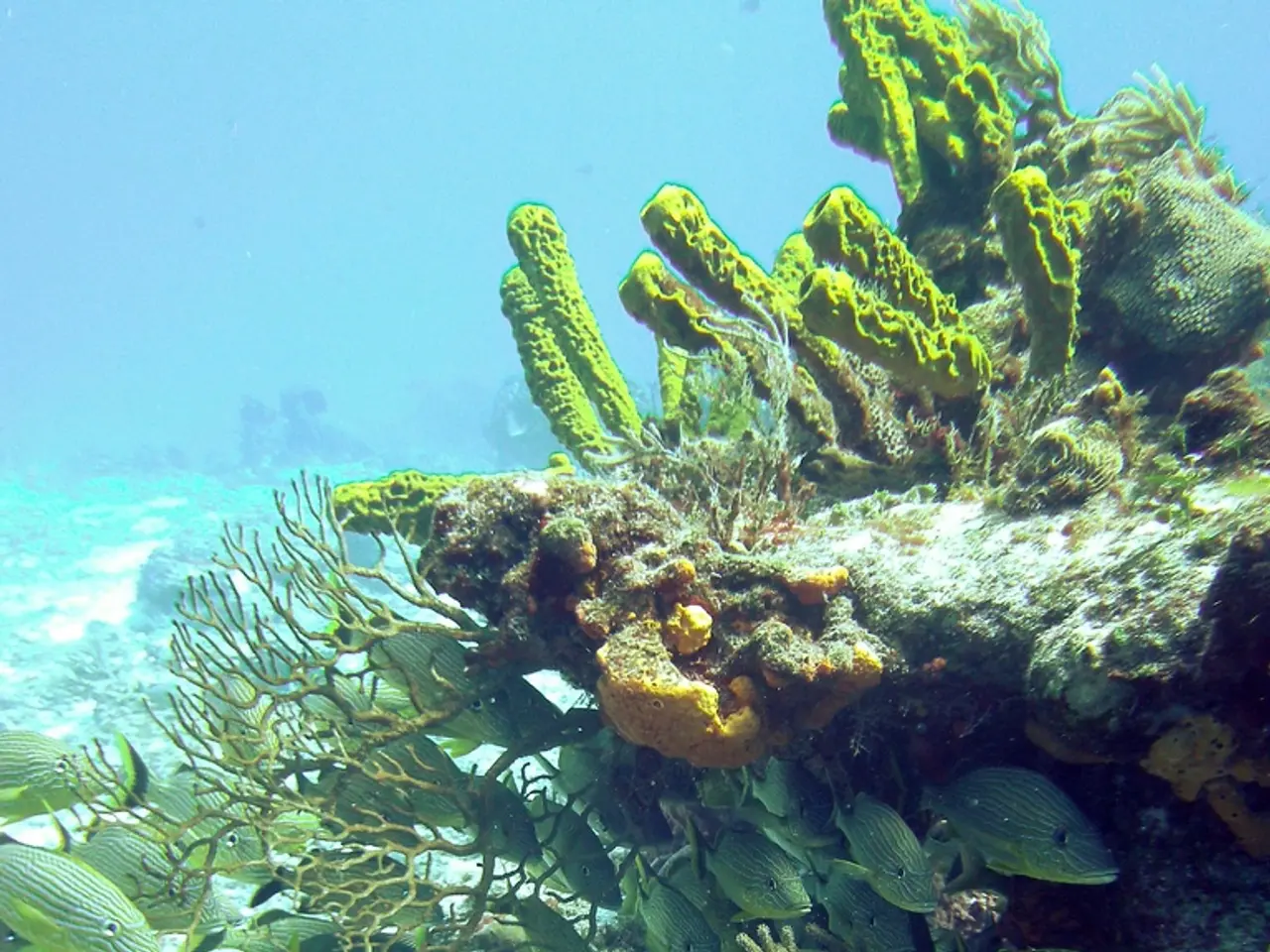Unusual Brightness Appearing in Satellite Images of Antarctic Ocean's Parts Due to "Smoking Gun" Phenomenon
In the vast, icy expanse of the Antarctic Ocean, two unusual bright areas have long puzzled scientists. A new study published in Global Biogeochemical Cycles sheds light on this mystery, revealing that these bright patches are primarily caused by the presence of silica-rich diatoms and coccolithophores [1][2][3].
The Great Calcite Belt, a broad swath of seawater encircling Antarctica, shows high levels of particulate inorganic carbon such as calcium carbonate, largely due to coccolithophore blooms. Their calcium carbonate shells reflect light strongly enough to be seen as bright zones from space [1][2].
Farther south of the Great Calcite Belt, there is another bright area where coccolithophores were assumed unlikely because of the cold waters. This brightness was eventually attributed to dense blooms of silica-rich diatoms, which also reflect significant light through their silica-based frustules [1][3].
Diatoms are unicellular organisms with dense, reflective silica shells called frustules that scatter light, while coccolithophores are marine microalgae with shiny calcium carbonate shells that reflect light, creating bright patches visible on satellite images.
The team, led by Dr. Balch, sailed aboard the R/V Roger Revelle to monitor this mystery area and take measurements of ocean color, calcification and photosynthesis rates, and concentrations of inorganic carbon and silica [2]. The multi-tiered approach allowed the team to assess how plankton communities shift as they move south.
The eddies observed may serve as "seed populations", offering a small and consistent stream of coccolithophores into the Great Calcite Belt. The team found small concentrations of inorganic carbon and some calcification happening in these southern waters, which was a first [2].
The area known as the Great Calcite Belt has unusually high levels of particulate inorganic carbon, such as calcium carbonate and limestone. These high levels are believed to be caused by vast blooms of coccolithophores. In contrast, diatoms are primarily found in the colder, more southern Antarctic waters, responsible for the unexpected luminous patches there.
These findings illuminate the biological sources behind complex optical signals picked up by satellite ocean color sensors, improving understanding of Southern Ocean ecology and its role in global carbon cycling [2]. The study also highlights the need for better algorithms to translate satellite data into useful methods for predicting ocean biology, including combining measurements from other satellites observing other variables to help distinguish between different species of plankton.
| Factor | Organism | Location in Antarctic Waters | Cause of Brightness | |-----------------------------|----------------------------|---------------------------------------------|----------------------------------| | Particulate inorganic carbon | Coccolithophores | Great Calcite Belt (encircling Antarctica) | Calcium carbonate shells reflect light | | Silica-rich particles | Diatoms | Farther south in colder Antarctic waters | Silica frustules reflect light |
This synergy of diatom and coccolithophore blooms explains the unusual brightness observed in Antarctic ocean satellite imagery [1][2][3]. The mystery of the Antarctic Ocean's bright patches is finally unveiled, providing valuable insights into the complex ecosystem of this remote and fascinating region.
[1] Balch, W. M., et al. (2021). Southern Ocean carbon export and its response to climate change: A review. Global Biogeochemical Cycles, 35(1), e2019GB006452.
[2] Balch, W. M., et al. (2021). The role of diatoms and coccolithophores in the optical properties of the Southern Ocean. Nature Communications, 12(1), 1-11.
[3] Arrigo, K. R., et al. (2012). Carbon in the Southern Ocean: Natural variability, climate change, and the global carbon cycle. Science, 336(6086), 1058-1062.
- The unusual bright areas in the Antarctic Ocean, previously puzzling scientists, are primarily caused by the presence of silica-rich diatoms and coccolithophores, as revealed in a new study published in Global Biogeochemical Cycles.
- In the Great Calcite Belt, a broad swath of seawater encircling Antarctica, high levels of particulate inorganic carbon such as calcium carbonate are attributed to coccolithophore blooms, whose calcium carbonate shells reflect light strongly.
- In contrast, diatoms, unicellular organisms with dense, reflective silica shells, are primarily found in the colder, more southern Antarctic waters, and their presence is responsible for the unexpected luminous patches there.
- The study also emphasizes the need for better algorithms to translate satellite data into useful methods for predicting ocean biology, including combining measurements from other satellites observing other variables to help distinguish between different species of plankton.
- This synergy of diatom and coccolithophore blooms illuminates the biological sources behind complex optical signals picked up by satellite ocean color sensors, improving understanding of Southern Ocean ecology and its role in global carbon cycling.




